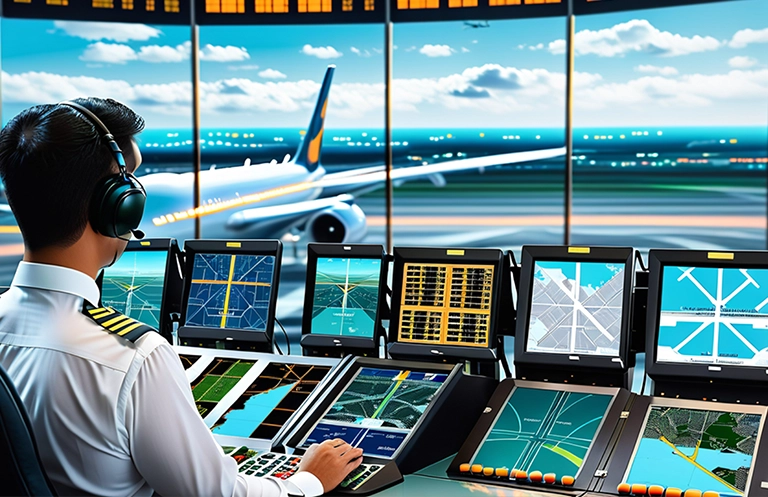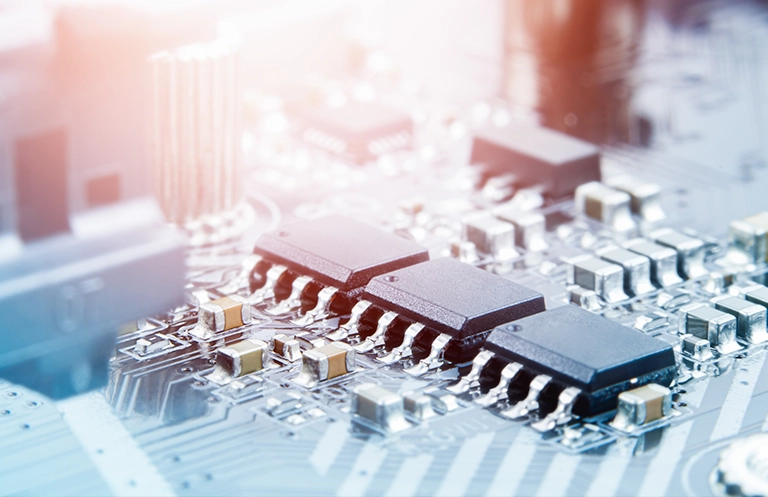An integrated cockpit system is a replacement of earlier car cockpits, which had a traditional instrument cluster attached to the dashboard of the car, which was used for controlling the vehicle. The traditional vehicle cockpit consists of steering, brakes, music system, HVAC and navigation system – all controlled manually by the driver. If we look at it, all these controls can also act as distractions for drivers, thus increasing the risk of an accident.
The new integrated cockpit comes with advanced multiple screens that display all the relevant information in one place, with human-friendly HMI (Human-Machine Interface) and many different components attached to it, which makes it easier for the user to communicate and control the vehicle. It provides a platform by which the driver can easily control the vehicle without getting distracted, making driving easier and smoother.
Market analysis of integrated cockpit electronics
The demand for vehicle manufacturing is increasing, and so is the demand for integrated cockpit electronics. Earlier, the cost of making a cockpit was around 2% to 3% of the total cost of a vehicle. However, due to the rising demand for more user-friendly, convenient, and safer cockpit systems, the cost has increased to 11% to 12 % of the total cost.
RELATED BLOG
According to the Automotive Cockpit Electronic Market report from MarketsandMarkets, in the year of 2016 and 2017, the global electronic cockpit market was valued around $34 Billion and is predicted to grow at a CAGR of around 8.6% over the upcoming period. Region-wise, North American and European electronic cockpit markets showed the highest percentage growth compared the other markets.
Components and technologies for a better-integrated cockpit
Different technologies and components are making an appearance in the market for digitally integrated cockpit systems. Some of them are discussed below:
1) Head-up display (HUD)
This type of display was first used for fighter aircraft and is now adopted by the automobile industry. HUD is a transparent display that projects the information like the vehicle’s speed, navigation data, data on obstacles, and much more, directly into the driver’s line of sight without causing any distraction.
There are three types of technologies used here; namely, C-HUD, W-HUD, and Augmented Reality-HUD. Right now HUDs are mostly used for luxury vehicles, but as the customer demands are growing along with the market, OEMs are planning to introduce HUD to commercial and passenger cars as well. The future of HUDs will be 3D-HUDs, Voice Command controlled HUDs, and laser HUDs.
2) Infotainment system
Infotainment, as the word suggests, is a combination of information plus entertainment. Basically, an infotainment system is a collection of hardware and software in vehicles that provides audio and video entertainment/information. Infotainment systems play a vital role in making a journey enjoyable; earlier this role was played by systems with CD and cassette players, which were the only means of entertainment.
As the automobile tech industry continues to grow, the older infotainment systems are getting replaced by advanced systems with HD screens and better connectivity options like Wi-Fi, Bluetooth, and USB. HD touch screens are fitted into the vehicle’s dashboard for the driver to gain access or on the back seats where the passengers can use it. They can be controlled through the touch screen or via remote controllers.
3) Navigational system
The automotive navigational system uses navigation satellites to pin out the location of a particular place or person (via mobile). These systems are not limited to providing the location of a place or person. They also provide information about nearby hotels, restaurants, hospitals, petrol pumps, traffic congestion on roads, shortest route, and more such information – which is analyzed and optimized by different algorithms.
Navigation systems are of two types, 2D and 3D. In the integrated cockpit system, their information can be displayed on head-up displays (HUD) or on the screens where vehicles’ other audio/video information is displayed. All this information is very near to the driver’s line of sight, making it comfortably accessible even while driving.
4) Embedded Virtualization
For making standalone systems for handling various functions of the car like diagnostics, infotainment, and telematics, OEMs used to integrate multiple ECUs (Electronic control units), which are the devices used to control electrical systems of the automobile. These ECUs caused explosions in many vehicles. To solve this problem and to make an affordable featured-packed cockpit system, virtualization is used.
Virtualization is a technology by which multiple operating systems can run on a single system. It is achieved by a software layer known as hypervisor, which is basically an interface between hardware and applications.
The use of virtualization helps us to run multiple operating systems on the targeted hardware, thus utilizing the hardware resources in an efficient manner. For example, a cockpit electronic system can consist of different operating systems that fulfill different purposes; for example, Linux for handling analytics data and Android for entertainment related data. This requires different hardware for installing them, directly increasing the utilization of resources and the cost of making a vehicle.
5) Smart HVAC Controller
Nowadays, every single vehicle comes with a pre-installed HVAC (Heating, Ventilation, and Air Conditioning) system. An HVAC system is used for controlling vehicle cabinet temperature. Earlier, knobs were installed for regulating the temperature, but as the technology has advanced, these have been replaced by automatic temperature controllers. These consist of heat sensors are installed inside the cabinet of the car. The heat sensors detect the temperature inside the vehicle and send the data to a programmable controller which then adjusts the cabinet temperature (according to the algorithm).
6) Smart Voice Assistant
Right from controlling audio/video information, to managing several functionalities of the car, a smart voice assistant will allow drivers and passengers to perform several tasks hands-free. According to Business Insider, in the USA, the use of voice assistance in cars is more popular than its use in a smartphone because of its hands-free nature. OEMs are working on developing connected cars that are embedded with voice assistant systems, which will take the driving experience to a whole new level.
Big companies like Apple and Google have developed connected car operating system extensions/apps which can be connected to the dashboard display through USB or via Bluetooth/WiFi. Among these, Apple’s CarPlay and Google’s Android Auto are the two apps specifically developed to operate connected systems of the car. According to business insider, more than 70 car manufacturers are using Android auto and over 50 car manufacturers are using CarPlay as a smart voice assistant system.
The role of OEMs and service providers
Considering the points we discussed so far, it is evident that the future of the automobile industry will consist of automated and connected cars with scalable and fully integrated digital cockpit systems. OEMs are taking care to fulfill of customer demands concerning safety, convenience, and cost-effectiveness. It is not easy for an OEM to develop the whole system on their own, so they take help from different automotive service providers which specialize in specific technologies.
eInfochips understands the challenges faced by OEMs while developing a smarter integrated cockpit system and helps them to build end-to-end multimedia solutions, camera-based solutions, connectivity protocols, and interactive displays with human-friendly HMIs. If your business needs help with integrated cockpit systems, get in touch with us.













